Choosing Your Fantasy Book Cover Style
Ollie Ander
Is probably just a couple cats in a trench-coat—the hair shedding and sunlight napping are highly suspect.
A book’s cover can be as influential to its reception as the story itself. The writing is a book’s core, but its visual presentation is what ensures anyone picks it up in the first place. Even more importantly, a book’s cover sets expectations of what’s to come, and a mixed message can lead to bad reader experience.
Some genres go through cover trends often (Romance with its newer "cartoonified" art style), whereas others generally stick to one look (Contemporary publishing leans into minimalism). Due to its roots in medieval aesthetics, the Fantasy genre is a mixed bag when it comes to what a cover can look like—nothing goes out of style, but trends are too significant of marketing tools to ignore. Older, larger Fantasy series rebrand their covers all the time! So as an indie Fantasy author, what should your cover look like?
This article is full of suggestions to help guide you in the right direction when hiring a cover designer, or making a Fantasy cover yourself.
Classic Fantasy Book Covers
Classic Fantasy book covers appeal lies in their dated aesthetic: Beautifully stroke-rendered portraits and sprawling painted landscapes. The intention is to sell readers on the familiar, medieval, High Fantasy that the genre was founded on.
Take Brandon Sanderson’s The Way of Kings, published in 2010. It fits in among all the older well-worn paperback books you’re used to finding in the Fantasy section of a thrift store.
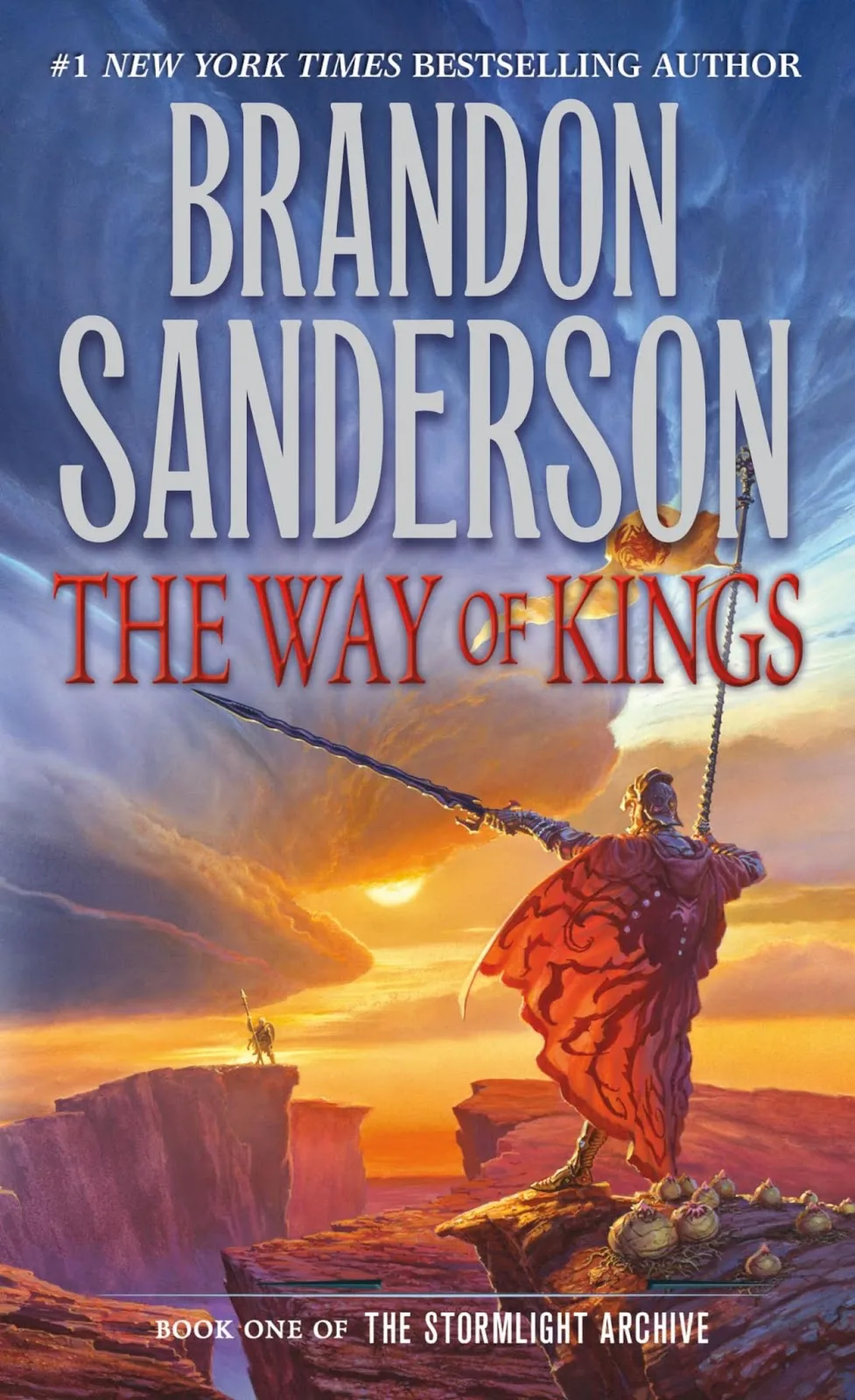
The fourth installment of The Stormlight Archive Series, Rhythm of War, published in 2020, adapted a faced character-centric cover, but maintained similar elements: the divided background landscape with heavy use of orange and blues. Both maintain the timeless tradition of a Classic Fantasy cover—there’s no mistaking what genre they are or where they belong.
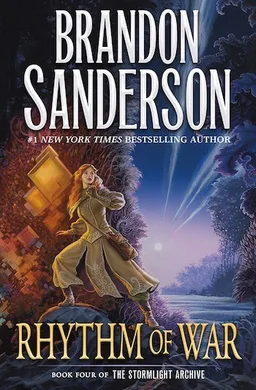
The aesthetic of a book cover that would otherwise function as a wall-painting doesn’t need to include a sprawling landscape to be effective, though the environment itself is the key.
Legends and Lattes by Travis Bladree, published in 2022, highlights the two main characters, prominently displaying their Fantasy race and their environment, that being a cafe. Just as Sanderson’s covers promise adventure through the background, Baldree’s cover offers a cozy twist on the commonality of taverns in Fantasy.
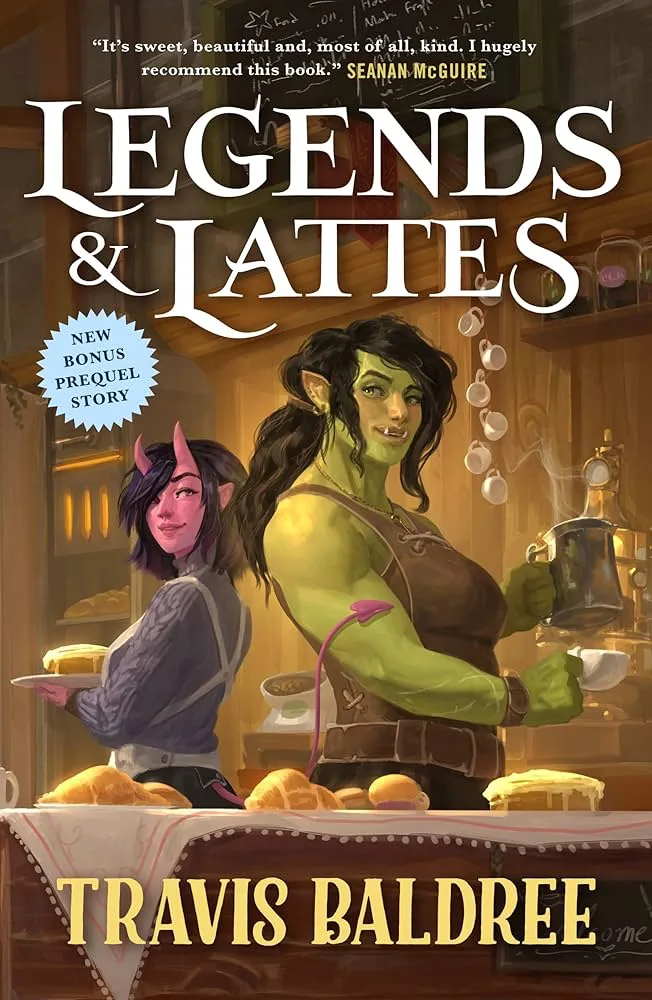
Classic Fantasy book covers rely on the artisanal care of a professional painter to bring their setting to life and offer the promise of that to readers. Admittedly, that’s a costly aesthetic to pursue.
"Hand-painted" is a hard barrier for indie authors to afford or have the skill to make themselves. I would not recommend offloading the creation of your cover art to GenAI Art for a variety of reasons, but namely, when it comes to this genre and aesthetic, your audience will notice. It is specifically the care of craft that makes this type of cover so appealing; a hand-painted cover promises a lovingly built Fantasy world.
Options for Painted Fantasy Covers
Buy
Shop around well-known Fantasy cover painters until you find one you love. Reach out to them for a quote to get a commission. This direct route may require a large down payment before your release, but having good cover art is an investment in your books’ success.
You can save up enough for a commission through personal means, but there are also plenty of ways to generate funds to help with the expense. A Kickstarter goal for your book release could be hiring your "dream cover designer."
Barter
Reach out to less established artists. Big names end up with big book cover deals for a reason, but everyone has to start somewhere. If you don’t have a huge fanbase as a writer yourself yet, seek equivalent level artists. Not only will they be cheaper to hire, and probably have a less busy schedule (faster turn-around), but you may be able to work out a deal that benefits you both to lower cost and heighten mutual exposure.
Build
Paint it yourself! I know this is a tall order, not everyone is artistically inclined, but painting is therapeutic (sometimes, haha…). It’s never too late in life to learn a new skill. To be completely honest though, people appreciate effort. Even if your cover isn’t as detailed or skillful as the rest of the Fantasy cover line up, seeing that you tried—that genuine, human effort was made—means something.
Hiring a small artist or doing your cover yourself says that you care about your book more than buying a super expensive cover (which just proves how fat your wallet is).
Modern Fantasy Book Covers
Modern Fantasy book covers use a cleaner, streamline aesthetic compared to their Classic Fantasy "predecessors." Where Classic Fantasy covers’ focus is on the promise of setting, Modern Fantasy covers lean into trope marketing and fitting in over standing out.
Modern Fantasy covers put a lot of visual weight on the title font: elegant, gilded. There may be an object as the main focus outside of the typeface, but otherwise the background is meant to remain the background; not something to dwell on. The goal is to be beautiful, simple, but subtle.
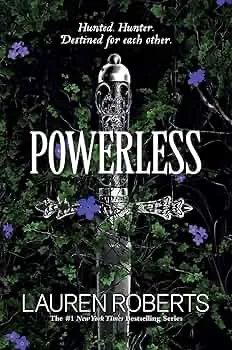
Powerless by Lauren Roberts is a prime example of "simplicity sells." Though an artist can spend an absurd amount of time and effort crafting a still-life image for your cover, this type of Fantasy cover is the more budget-friendly option. There are plenty of free/cheap image editing apps in which indie authors can add their own titles, and lots of stock image sites to get your hands on a Fantasy-forward photo.
Having a more modern aesthetic isn’t only for newer releases. Large Fantasy series routinely undergo rebrands, and with those re-releases, usually comes a cleaner, minimalistic aesthetic. That said, even a powerhouse like A Game of Thrones by George R.R. Martin is canonically known for being simple: thick tomes with a plain colour-specific background and nothing but the title font and a single suspended item on the front cover.
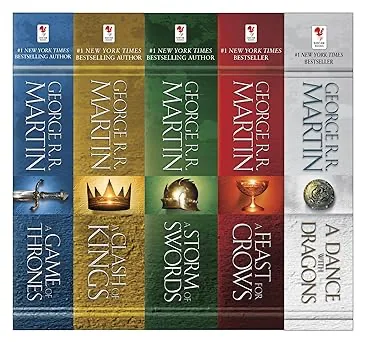
Even if you plan on keeping your cover crisp, clean, and singular, here’s some helpful, additional things to consider when making a Modern Fantasy book cover.
Symbolism
Are there any elements you can incorporate into your cover that will set it apart from others, and draw readers in through its presence? The symbols/icons you incorporate become the story’s promise.
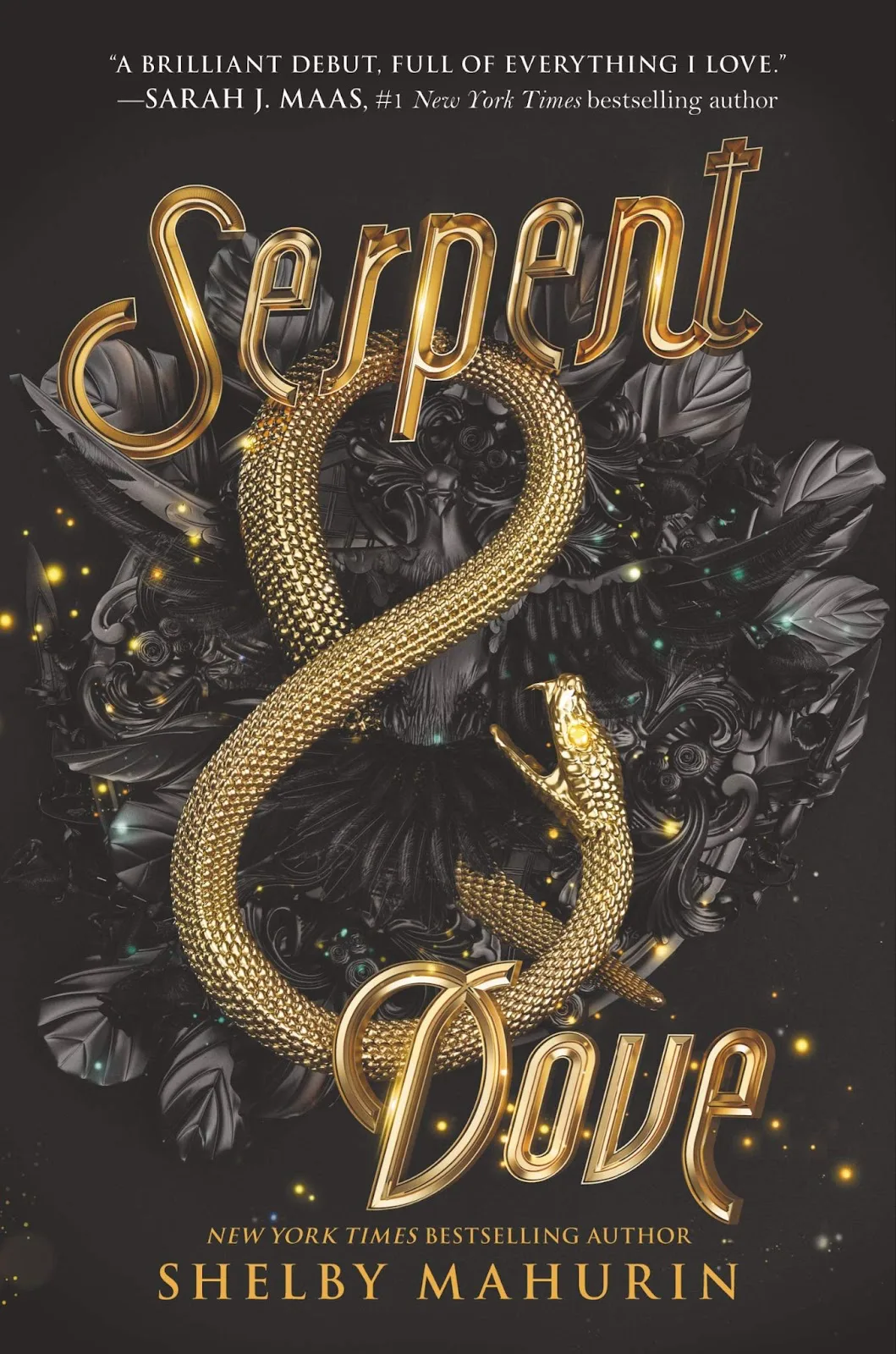
With Serpent and Dove by Shelby Mahurin, the visual dynamic of the snake enclosing the dove sets the expectation of the relations between characters in the story.
You don’t have to stick to the stock-standard display of weapons or jewelry on your Fantasy cover. Pick and include whatever is most relevant to your story.
Colour Theme
You should consider the colour theme and palette when designing your Fantasy Cover. A dark or cluttered cover will denote Dark Fantasy compared to something vibrant. Colour/shades conjure different emotions, which in turn set their own expectations.
Likewise, be aware of the colour choice of your cover when releasing in a series. It’s a Fantasy series staple to vary the cover colours, starting with primaries and expanding on the spectrum as you go, giving each installment its own colour identifier. Making all the covers of a series too same-y may lead to uninformed buyers accidentally purchasing repeats, or not realizing the later installments are new books at all.
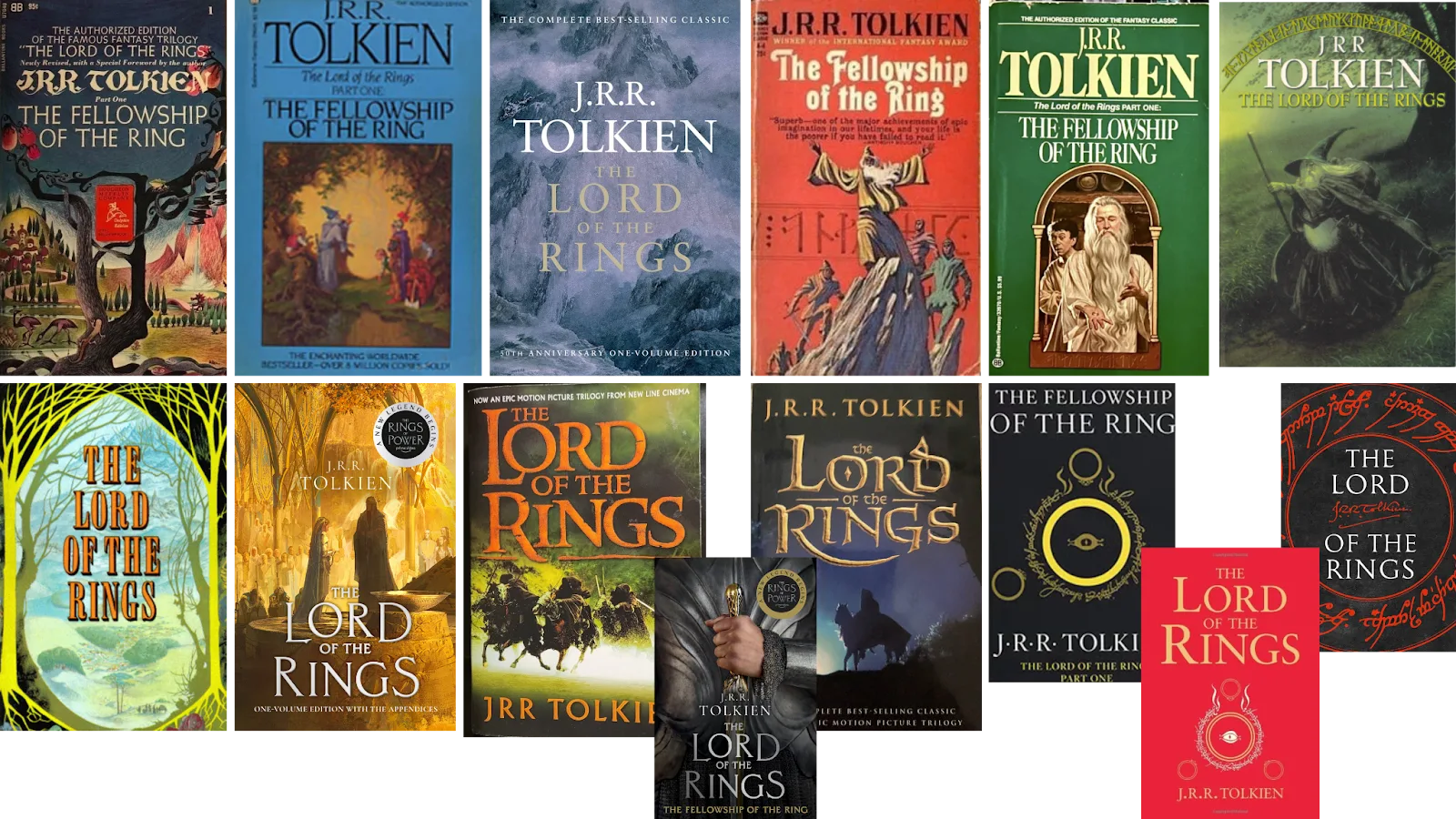
Now, despite expressing the importance that your cover communicates its contents, you’ll surely have noticed that cover rereleases and rebrands consistently expand past their genres to appeal to audiences that want a different aesthetic on their bookshelf. The Lord of the Rings has had so many cover changes over the years by different publishers, some of them are unrecognizable. And although that still sells, I would recommend not straying too far away from what’s expected until your book has claimed enough fame to warrant it. These types of cover redesigns only work because of the demand by the pre-established audience. If people picked up the minimalist cover of LOTR as their first impression, they’d surely be put off by the language used inside.
If you’d like to dive deeper into the practice of setting expectations, check out this article on $ What Makes a Good Fantasy Book Cover$ , where I dissect famous examples of what works and why. Or, if your story is multi-genre and doesn’t feel like it quite belongs in Fantasy at all, hopefully you can find a better genre fit with these $ 2025 Book Cover Trends!$
Like what you're reading?
Join other authors like you in NovelPad’s free writing community!
Join the communitySimilar Posts
What File Formats are Accepted by Kindle Direct Publishing?
File types for ebooks, paperbacks, and hardbacks on Amazon's KDP.
Ollie Ander
Is probably just a couple cats in a trench-coat—the hair shedding and sunlight napping are highly suspect.
How To Write Strong Atmosphere In Stories
7 best tips for creating strong atmosphere in your writing.
Hannah Lee Kidder
NovelPad Author
Camp NaNo Perks 2023
What are the benefits of participating in Camp NaNoWriMo?
S.R. Beaston
Crafty with words, wit, and wisdom, just add caffeine to make it more interesting.
What is a ghazal? The essence of emotion in poetry
Definition, examples, and history of the ghazal poem.
Hannah Lee Kidder
NovelPad Author
How long is a Science Fiction Book?
How many words, chapters, and pages should be in your sci-fi novel?
Ollie Ander
Is probably just a couple cats in a trench-coat—the hair shedding and sunlight napping are highly suspect.
When is the best time to publish a horror novel? [Peak Sales Method]
Make the most of your horror book launch by strategizing with these tips.
Bella Rose Emmorey
book editor, rogue behaviorist, digital marketer, writer, brand builder, plant aunt, and cheese enthusiast.